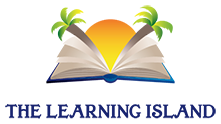What is an Academic Source?
If you’re ever written a paper for high school or college, you’ve probably been told that you need to use academic sources. However, what qualifies a source as “academic”? Today we’re going to shed some light on why certain sources are considered appropriate for an academic paper, while others are not.
Peer Review
This should be your gold standard for determining whether a work is academic or nonacademic in nature. Peer reviewed articles have been vetted by other scholars in the same field (the author’s peers) to get their opinion on the quality of the article, its relevance to the field, appropriateness for the journal, and so on. The peer review process ensures that articles and studies published in scholarly journals meet academic rigor.
Examples of Academic Sources
Peer Reviewed Journals: Any reputable academic journal will run the articles submitted to it through the peer review process before publishing them. In addition, other academics in the same field will routinely write journal articles that critique, revise, and expand upon the works published by their peers. Many peer reviewed journals are now archived online through resources such as Lexis-Nexis, Galileo, JSTOR, and Project Muse. These and other online resources to reliably academic journals are available through your school’s library
Scholarly Books: While these are not peer-reviewed per se, they meet many of the same standards of quality as works that are. A scholarly book is written by one or more experts in his or her field. Often such a book will be an expansion of an article or study that has already been published in a peer-reviewed journal. Scholarly book are meticulously cited and are almost always published by the presses of major universities (Cambridge, Harvard, Oxford, Yale, etc.). One drawback to academic books is that the information in them may be out of date. If a book is more than a couple of years old, make sure to check relevant academic journals to ensure that the information it contains hasn’t been contradicted or superseded by newer research.
Studies from Independent Government Agencies: These studies can be extremely useful, provided they’re supported by a consensus in the scholarly/peer reviewed community. The key word here is “independent.” Make sure that the agency that commissioned the study has no partisan or otherwise vested interest in coming to a particular conclusion. The CDC (Centers for Disease Control and Prevention) is one example of an independent government agency whose work consistently meets academic standards.
Examples of Non-Academic Sources
Encyclopedias and Wikipedia: Encyclopedias are designed to provide quick summaries of many topics, not a scholarly analysis of each. Entries are not peer-reviewed, meaning that they can be biased in favor of the position of the author and/or editor. There is no guarantee that the sources an entry uses are current, even if the encyclopedia itself is a recent edition. Wikipedia is even worse in this regard because anyone can edit an article. That having been said, the sources a Wiki cites can potentially be academic. So by all means check the Wikipedia entry for a topic that you are researching. Just remember to skip the entry itself and read any scholarly articles that it cites instead.
Popular Magazine Articles: Magazines written for what is called a “general audience,” such as Time, Newsweek, Cosmo, etc., don’t use the peer review process. The decision whether or not to publish an article is left up to the judgment (and frequently the whims) of the magazine’s editor. The only time you might want to use a popular magazine article is if it cites a study or other academic article that you can’t access directly. However, this is something of a last resort. If you do decide that you “need” to indirectly cite a source via a magazine, make sure that the conclusions that the article researches are consistent with another source that is actually peer reviewed. This also applies to any websites (such as Salon) that are styled in the manner of a traditional print magazine.
Newspapers and News Sites: Much of what applies to magazines also holds true here. Use a newspaper article if you feel that you need to, but try to track down the primary source(s) first. In addition, you should stick to factual articles and avoid editorials and opinion pieces. Make sure any newspaper that you cite has a track record for solid, unbiased reporting and isn’t pushing a particular agenda.


 “My grades in school are great, but when I got my SAT scores back they weren’t as good as I was expecting. Jenny at The Learning Island was able to look at my scores and help me out with my weak points as well as teach me the testing strategies I was missing the first time around. Now, my SAT scores match my grades. My college options are wide open now. I can’t thank you guys enough.”
“My grades in school are great, but when I got my SAT scores back they weren’t as good as I was expecting. Jenny at The Learning Island was able to look at my scores and help me out with my weak points as well as teach me the testing strategies I was missing the first time around. Now, my SAT scores match my grades. My college options are wide open now. I can’t thank you guys enough.”